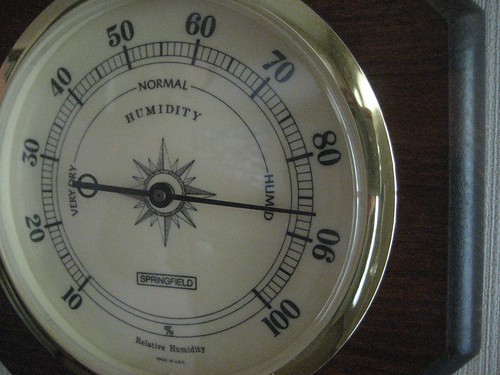Some things never cease to amaze me when doing these audits. One is how few people know how important it is to clean their dryer vents.
Not only does allowing them to clog reduce the efficiency of your dryer but it is a fire hazard as well. Remember when you were in college and the laundry rooms would, on a semi-regular basis, catch fire because someone forgot to clean the lint vent – for a week?
Well, when was the last time you cleaned your exterior vent?
Obviously the screen in the dryer itself is your first line of defense and should be cleaned every time you add or remove a load of clothes, but a lot of lint gets past that screen and gets stuck on your vent. Once there it continues to build and trap ever more fibers until, in some cases, the whole thing gets blocked off. At a minimum, the “flapper” gets stuck in the open position, allowing cold air into your house 24/7/365.
I’ve also seen many times (but never remembered to take photos) people venting their dryer out the basement window (for which they had to bust a pane) but not beyond the window screen. As a result the lint all gets caught between the vent and the screen – no chance for the lint to escape even if it wanted to.
If your dryer is venting into the home – hire someone to fix this ASAP, and read the note below.
If your dryer is on the second (or higher) floor there likely isn’t an easy way to clear the vent. Most people have their dryer in the basement though, so here are a few simple steps to cleaning them.
1. Locate your dryer vent – you might be surprised how many people don’t know where it is outside the house.
2. Using just your fingers, push up the flapper or louvers (the two most common styles).
3. Using your fingers or a flat-head screwdriver, scrape off what lint you can.
4. For flappers, make sure to get all the way up to the top where even a small amount of lint keeps them from closing.
5. For louvers (three horizontal pieces layered atop each other) you can actually pry one or more of the pieces out – pull in the middle of the louver so the piece arcs. Clean each of the louvers off and you can actually stick your hand into the duct and pull more lint from the sides.
6. Go back inside and turn the dryer on to a no-heat mode. Sometimes this is “fluff-no heat” or “timer-no heat” or similar. Go back outside. With the louvers off or the flapper open, try to reach your arm in and pull any additional lint out from the sides. The air flowing through the ducts makes it easier to get all that gunk out, but watch out for your eyes – it comes flying at you.
7. Louvers should be reinstalled. You’ll see pegs at each side. Put one peg in, arc the piece (bending at the center again), and put the other peg in. Repeat for all three louvers and the order (top, middle, bottom) doesn’t matter.
I typically recommend homeowners clean their vents every month or two.
*****UPDATE***** I’d long suspected but never been certain that the IRC residential building code says not to vent a dryer indoors. Bob’s comment and another offline got me to do the research and indeed, indoor venting is against code. Thanks to the good folks at Green Building Advisor and their avid readers I got the answer I needed. (If you’re interested in these issues check them out – they’re one of the best resources I’m aware of.) Emphasis below is mine.
M1502.3 Duct termination. Exhaust ducts shall terminate on the outside of the building. Exhaust duct terminations shall be in accordance with the dryer manufacturer’s installation instructions. If the manufacturer’s instructions do not specify a termination location, the exhaust duct shall terminate not less than 3 feet (914 mm) in any direction from openings into buildings. Exhaust duct terminations shall be equipped with a backdraft damper. Screens shall not be installed at the duct termination.
NOTE to people venting dryers indoors: If you’ve got a gas dryer venting indoors you’re blowing lots of hot moist gasses, including carbon monoxide, into your house. If you’ve got an electric dryer venting indoors it isn’t anywhere near as dangerous as a gas dryer, but it is still a very bad idea.
Think about how much moisture is in your clothing when it goes into the dryer. Not sure how much? How heavy was your laundry before it went in the wash as compared to after? Yeah, it’s about that much water.
All that moisture is now going into your home where it can cause mold, mildew, rot and other safety issues. The fancy contraptions available online are designed to catch lint, not stop moisture from entering your home. Especially if you’re trying to make your home safer and more efficient (why else would you be reading this?) you do not want to add moisture to the house.
Still don’t believe me? Spend a few bucks on a decent hygrometer. Check the humidity before and after running the dryer. If you’re willing, drop a note in the comments with what you found.


